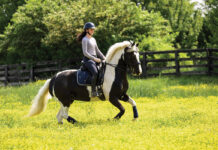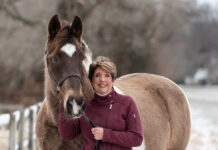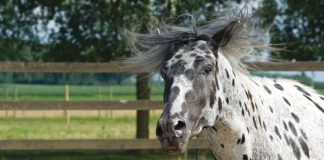Christina Handley has had an eye for photography from a young age, when she picked it up as a hobby from her parents. She eventually combined her passion for taking photos with her love of horses and developed it into a lifelong career. Her work has been published in magazines–including Horse Illustrated–catalogs, calendars and product advertisements. With the expertise she has developed over time, we thought she was a fitting candidate to judge our 2009 photo contest, “The Spirit of the Horse.” Here are five top tips she came up with after judging the entries.
- Start with a well-groomed horse.
- Consider your location and watch your backgrounds–make sure they are clean and uncluttered.
- Use the correct gear. A digital single-lens reflex (DSLR) camera body and a long lens are best for photographing horses.
- Shoot in the right light. Mid-day is the worst time of day to shoot. Take your photos in the early morning or late afternoon/early evening when the sun is low in the sky.
- Keep the sun at your back so the light is falling on your horse.
“Wide-angle lenses cause distortion in your photo (i.e. large head and tiny bum),” she says. “You need to use a telephoto lens–200mm or greater is ideal.”
One of the most popular entries we saw is the image of the eye and the side of the face. Handley cautions photographers to take these photos when the sun is low. It’s also important to remove the halter and be sure that the horse’s eye is clean. “Think of the rule of thirds when composing the photo, and do not take it directly from the side,” she adds.
“The rule of thirds states that an image should be divided in nine equal parts by two equally spaced horizontal lines and two equally spaced vertical lines,” explains Handley. “Important compositional elements should be placed along these lines or at the intersections. Think of tic-tac-toe.
“There are two big ways the rule of thirds comes into play as a practical matter,” continues Handley. “The first is keeping your subject out of dead center, and the second is keeping your horizon line from dividing the picture in half.”
Handley’s last words of advice include putting safety first; be cautious around stallions and unfamiliar horses. If you’re shooting a moving horse, use a fast shutter speed. Finally, take your time. There’s no need to rush!
Download a free screensaver and desktop wallpapers featuring the 2009 photo contest winners.
View the 2009 honorable mentions and vote for your favorite.
Read more tips from professional photographer Bob Langrish







great tips!
I will def. use these tips when photographing my horses.
THANKS for making clear the Rule of Thirds — great advice
Great advice.